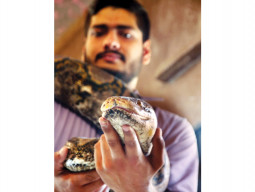
Most people love to have animals they can cuddle and share happiness with. But how many of us actually provide for them beyond the basic food and shelter?
The more time one spends with their pet, the longer the latter survives. Unfortunately, few of us are aware that the pet needs just about as much tender, love and care as a human baby; they are our responsibility when it comes to nutrition and pleasure. Read on to find out how you can keep your pet healthy and happy.
Buying a pet
Before you buy a pet, it is important to question whether you are ready for the hard work and responsibility. As we said earlier, adopting a pet is similar to rearing a child. In fact, it might even be harder as pets never really grow up or learn how to speak, demanding our utmost attention throughout their lives.
According to statistics released by the American Society for the Prevention of Cruelty to Animals (ASPCA), nearly three to four million dogs and cats are killed every year as a result of abandonment. They are left at animal shelters by their owners who, are unable to look after them. While this is indeed a better alternative to throwing animals out onto the streets, the shelters are often too crowded which affects the inmates adversely. They become unhappy, fall ill and even die.
Therefore, one must not only be ready to shoulder the responsibility but also be able to recognise animals are living things with needs, moods and feelings. It is better to stay away from animals if you don’t feel affectionate towards them.
Give your pet its own space
Just like babies and young children, animals can get frustrated if their surroundings — especially their sleeping arrangements — are modified too often. When you get a pet, choose one specific corner of your house and let them be the boss of it. Set up their bed here or place all their toys. Gradually, they will start recognising it as their spot and grow used to it.
Prepare their toilets
Allotting a special spot for your pet to sleep in may be crucial but not as much so as finding another one to set their toilet buckets in. Dogs can be trained and trusted to excrete outdoors but cats generally tend to be problematic when it comes to potty-training.
Offer them a variety of meals
Just like humans who tend to get tired if they eat the same meal every day, animals can also grow bored if the same food is given to them. Pet owners might feel like they have done their job by fetching a packet of pet food from the supermarkets but little do they know than animals crave variety and seek assurance that their owners care for them in the food. This means that the more thought you put into your pet’s meals, the more loved they will feel and love you back.
Groom them well
The level of hygiene, behaviour and beauty exhibited by your pet is testament to how you raise it and this is where pet grooming comes in. Remember the following basics to keep your pet looking and feeling its best:
Brushing:
It doesn’t matter whether your pet has a thick coat of fur or not — regular brushing is essential to prevent hair loss in animals. It will also keep their coat shiny, soft and healthy. Not to mention, the brushing strokes relieve the stress in animals and strengthen their bonds with the owners.
Bathing:
Most pets don’t enjoy being washed at all but you must help them acclimatise to the process by bathing them at least once every two weeks. Regular bathing will prevent fleas and who knows, they might actually begin to enjoy it?

Hair cutting:
Animals with thick fur coats must be given regular haircuts, especially during the summer seasons when the fur can elevate their body temperatures. However, it is advisable to let professional animal groomers or vets do this.
Nail trimming:
Many pet owners around the world have their pets de-clawed to prevent damage to sofas, pillows and various other items around their houses. Unfortunately, de-clawing is one of the worst things you could do to an animal as it depresses them and makes them loose their self esteem. A better alternative would be to trim their nails on a monthly basis or depending on their growth rate. If you are afraid you might hurt your pet during trimming then have a vet or groomer do it.
Ear care:
Animal ears can become the ideal breeding ground for bacteria if they aren’t cleaned every month. In fact, it is advisable to clean the ears following every bath. You may even use cotton cutips to perform the task without hurting your pet.
Always do what is best for them
There will be many times that you will have to make a difficult choice for your pet and hope for the best. For instance, most of us would hesitate to have our cats, dogs and rabbits neutered but did you know it makes them less vulnerable to uterine, mammary and ovarian cancers? Similarly, you may not wish to have the wings of your pet bird cut but in the long run, it might prove to be best. In fact, according to the ASPCA, spayed or neutered animals live a longer and healthier life than those who are not. It is also a good way to prevent excessive reproduction in animals.
Published in The Express Tribune, Ms T, January 11th, 2015.






















































COMMENTS
Comments are moderated and generally will be posted if they are on-topic and not abusive.
For more information, please see our Comments FAQ